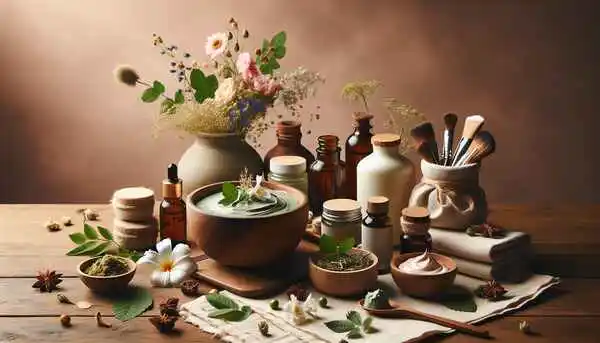Melding traditional wisdom with modern practices, Ayurvedic skincare offers a holistic approach to achieving glowing skin through natural means. Rooted in ancient Indian philosophy, Ayurvedic cosmeceuticals — dating back to the Indus Valley Civilization — provide personalized care by aligning with one’s unique dosha constitution. Emphasizing internal cleansing and balance, Ayurveda harnesses the power of natural ingredients, such as milk, yogurt, and clarified butter, to nourish the skin from within, minimizing side effects and promoting a harmonious connection between mind, body, and spirit.
This article delves into the essence of Ayurvedic skincare, guiding readers on a transformative journey to revamp their skincare routine with a focus on detoxification, dosha-specific beauty tips, and DIY face mask recipes. By integrating essential Ayurvedic ingredients such as chickpea flour and fuller’s earth into daily rituals, individuals can address a variety of skin problems, improve skin texture, and unveil radiant skin. Take the first step towards a more natural, ayurvedic skin treatment that promises long-lasting results for a luminescent complexion.
Understanding Your Skin Type in Ayurveda
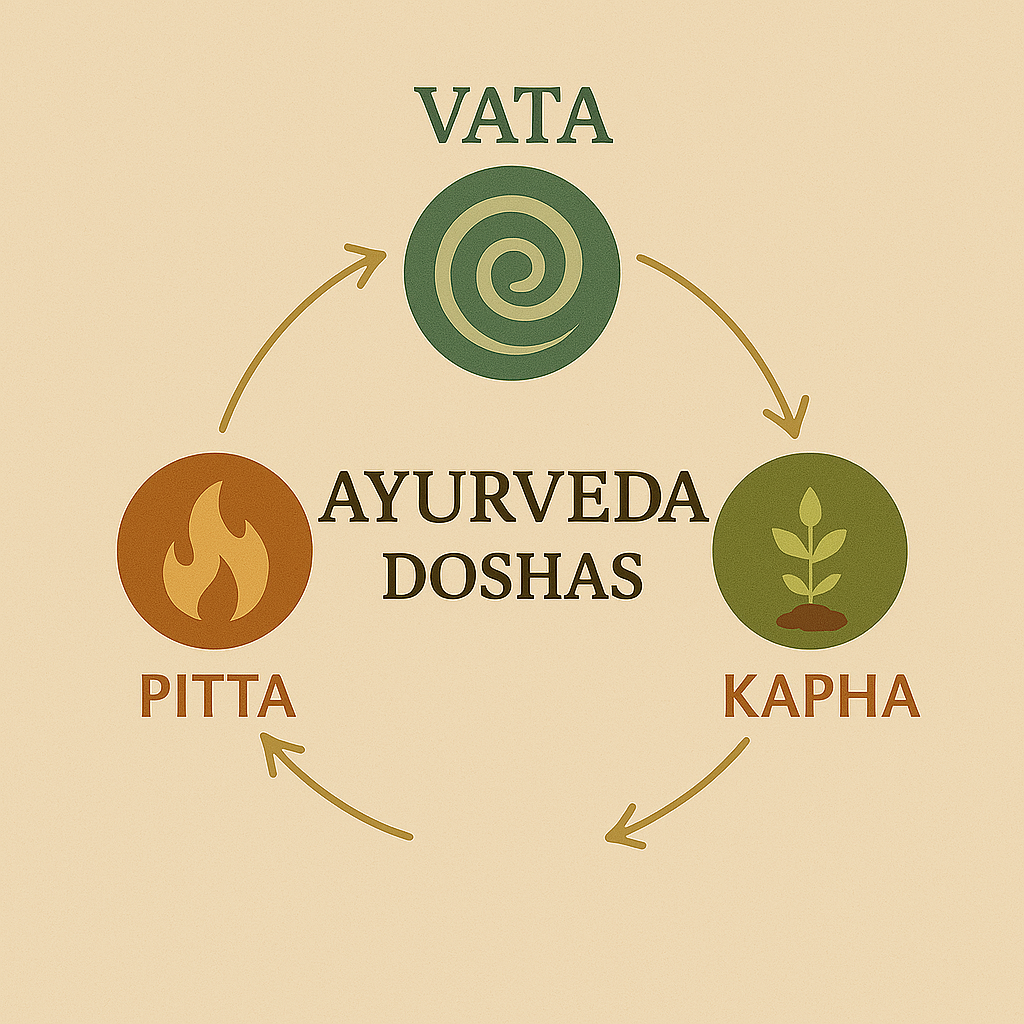
In Ayurveda, understanding your skin type is essential for a tailored skincare routine. The three doshas—Vata, Pitta, and Kapha—reflect distinct skin characteristics:
Vata Skin Type:
- Qualities: Delicate, thin, cool to the touch, and dry with fine pores.
- Aging Signs: Tends to develop fine lines and wrinkles earlier.
- Care Tips:
- Hydration is key; use gentle cleansers like almond powder mixed with coconut milk.
- Moisturize with a blend of sweet almond oil and chamomile essential oil for nourishment.
Pitta Skin Type:
- Qualities: Sensitive with a propensity for inflammation and an oily T-zone.
- Skin Issues: Prone to conditions like rosacea.
- Care Tips:
- Start the day detoxifying with warm water and honey.
- Choose soothing products and apply SPF to protect against rashes and inflammation.
Kapha Skin Type:
- Qualities: Oily, thick, with a tendency for cystic acne.
- Dietary Tips: Limit fried foods and dairy, add digestive spices like black pepper.
- Care Tips:
- Regular cleansing with a paste of chickpea powder, multani mitti, and aloe juice.
- Opt for light aloe or gel-based moisturizers.
For those with combination skin, elements of two doshas may be present, necessitating a flexible approach. Since Ayurvedic skincare emphasizes the body-mind connection, it’s vital to remember that what we apply to our skin is absorbed internally. Moreover, as the seasons change, so might your skin type, calling for adjustments in your skincare routine to maintain glowing skin.
Essential Ayurvedic Ingredients for Skin Care
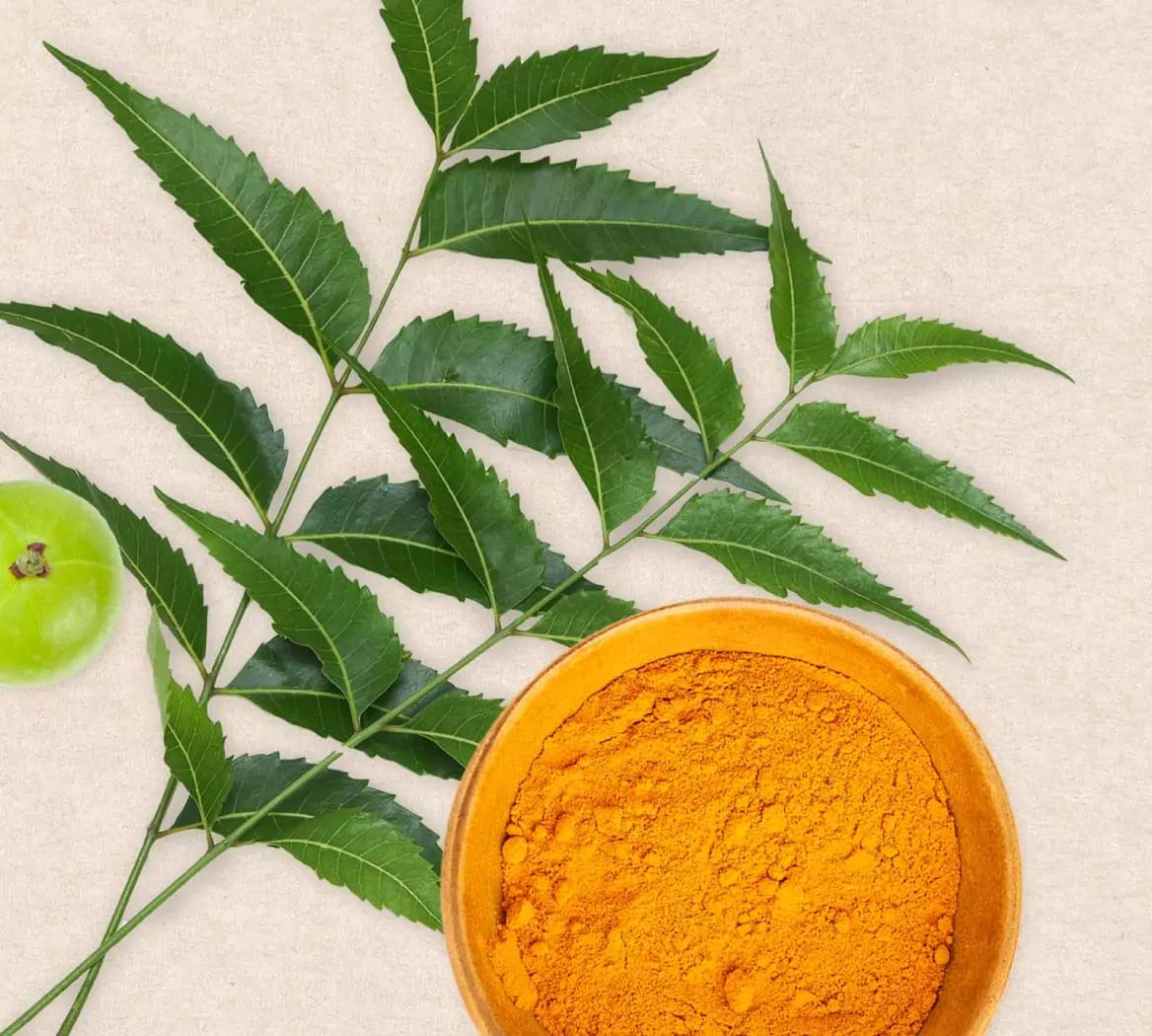
Aloe Vera is a cornerstone of Ayurvedic skincare, renowned for its ability to hydrate and soothe. It works wonders on wounds and burns and is a key ingredient in brightening masks that aim to reduce scars and dark marks. Incorporating Aloe Vera into your skincare routine can help heal and illuminate your skin, making it a must-have for those seeking a natural glow.
Neem stands out for its antibacterial and anti-inflammatory qualities, which are essential for managing skin conditions such as eczema, rashes, and acne. It also soothes itching and helps prevent skin infections, making it a versatile component for anyone looking to improve their skin’s health.
Turmeric is celebrated for its anti-inflammatory and antioxidant properties, which aid in reducing inflammation and balancing skin tone. It’s often found in brightening masks and products aimed at lessening the visibility of scars and dark spots. Turmeric’s benefits make it a valuable addition to any skincare routine focused on achieving an even and radiant complexion.
Ayurvedic Ingredients for Skin Care:
Aloe Vera: Soothes, hydrates, heals wounds and burns, reduces scars and dark marks.
Neem: Antibacterial, anti-inflammatory, treats eczema, rashes, acne, soothes itching.
Turmeric: Anti-inflammatory, antioxidant, reduces inflammation, evens skin tone, diminishes scars.
Other key Ayurvedic ingredients include almond butter and oil, chickpea flour, mustard oil, cardamon, and ghee, each addressing concerns like dryness, inflammation, and signs of aging. AVYA Skincare and other brands blend these traditional elements with modern skincare technology to create high-performing products.
For detoxification, Ayurveda recommends herbs such as Amla, Triphala, and Sandalwood, which support overall skin health. Regular use of these time-tested ingredients for cleansing, exfoliating, and moisturizing can significantly enhance skin quality.
By integrating these Ayurvedic ingredients into your skincare routine, you can take a holistic approach to beauty, ensuring that your skin receives the best care rooted in ancient wisdom.
Daily Ayurvedic Skin Care Rituals
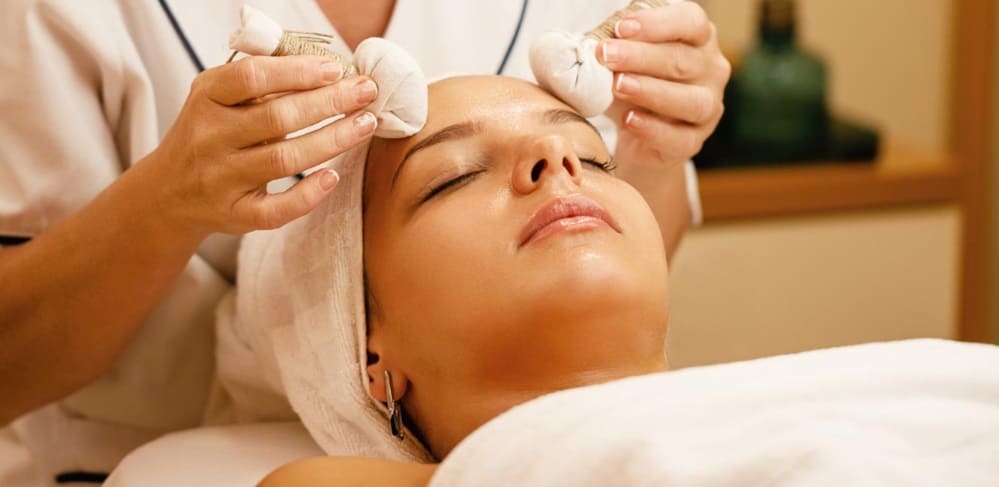
Ayurvedic skincare routines celebrate the simplicity and efficacy of natural care, encouraging a daily regimen that balances and rejuvenates the skin. Central to these routines are steps that align with the body’s natural rhythms and the changing seasons, known as Ritucharya. As the weather shifts, so should the skincare practices, ensuring the skin’s needs are met with appropriate cleansers, moisturizers, and tonics. A typical day might start with cleansing using gentle, natural ingredients like milk or honey, followed by toning with rose water, and then moisturizing with herbal oils tailored to one’s dosha.
Abhyanga, or self-massage, plays a vital role in an Ayurvedic skincare ritual. This practice not only nourishes the skin but also boosts circulation and fosters relaxation. Using oils such as sesame or coconut, depending on the dosha, one can perform a self-massage to enhance skin health and promote a sense of calm.
Lastly, Ayurvedic skincare is not just about topical treatments; it’s a holistic approach that incorporates dietary choices and lifestyle habits. A diet rich in fresh fruits and vegetables, along with adequate water intake, supports the skin’s natural detoxification processes. Regular exercise and sufficient sleep are also key components of maintaining glowing skin and overall well-being. By following these straightforward steps—cleansing, toning, moisturizing, and occasional exfoliating—your skincare routine can be a nurturing and effective path to radiant skin.
Detoxification for Radiant Skin

Ayurvedic detoxification is pivotal in maintaining not just overall health but also in achieving radiant skin. It operates on the principle of purging toxins and imbalances from the body to restore harmony to the mind, body, and spirit. The traditional Panchakarma therapy is a profound detoxification process, but a simplified version can be easily adopted at home, involving preparation, cleansing, and rejuvenation phases.
The benefits of engaging in Ayurvedic detox are manifold. It strengthens the digestive fire, known as Agni, which is crucial for eliminating toxins. This process leads to increased energy, vitality, and mental clarity, contributing to emotional and mental well-being. Skin health is directly impacted, with improvements in clarity and immunity, resulting in a glowing complexion.
To incorporate detoxification into your ayurvedic skincare routine, consider the following techniques:
Exercise and Yoga: Incorporate movements that enhance circulation and promote sweating, aiding in the natural detox process.
Swedana: Engage in herbal steam therapy to open pores and release impurities.
Abhyanga: Perform herbal oil massages to nourish the skin and stimulate the body’s natural cleansing mechanisms.
Herbal Remedies: Utilize the power of Ayurvedic herbs such as Triphala for detoxification, Neem for its purifying properties, Amla for its rejuvenating effects, Cilantro for heavy metal detox, and Ashwagandha for stress relief.
Ayurvedic Diet: Embrace a diet rich in fresh, whole foods, light meals that are easy to digest, and spices and herbs that support the body’s natural detox pathways. Hydration is also key, so ensure adequate water intake.
Ayurvedic cosmeceuticals, which combine these natural resources with modern skincare science, offer a safe and holistic approach to beauty and wellness. By integrating these detoxification practices into your routine, you can enhance your skin’s natural glow and contribute to a healthier lifestyle.
Ayurvedic Recipes for Homemade Skin Care Solutions
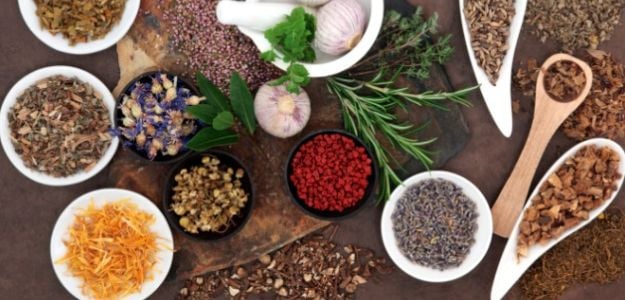
Ayurveda offers a treasure trove of skincare solutions that cater to different needs, from managing aging to enhancing skin glow.
Here are some DIY Skin Care recipes that you can easily create at home:
For All Skin Types:
Age-Defying and Radiance Boosting Face Mask
Mix equal parts of sandalwood powder, rose petal powder, aloe vera gel, and turmeric.
Add enough milk, water, rose water, or yogurt to form a paste.
Benefits: This mask aims to enhance natural glow and promote healthy, radiant skin.
For Oily Skin and Large Pores:
Pore-Reducing Face Mask
Combine 1 tablespoon of sandalwood powder with 1 tablespoon of multani mitti (fuller’s earth).
Add a pinch of turmeric and enough yogurt to create a smooth paste.
Benefits: This formulation works to dry out excess oil, nourish the skin, and reduce pore size.
For a Brighter Skin Tone:
Brightening Face Mask
Mix 2 tablespoons of amla powder with water to form a paste.
Stir in a small amount of organic honey for added hydration.
Benefits: The mask is designed to brighten the skin tone and reduce blemishes and hyperpigmentation.
For Cleansing Body and Face:
Gentle Cleanser Recipe
Blend sesame oil with a few drops each of rose and jasmine oil.
Add aloe vera powder or rose petal powder to thicken the mixture.
Benefits: This cleanser moisturizes and cleans gently without stripping natural oils.
For Refreshing the Skin:
Tulsi Sweet Rose Face Spritzer
Steep 2 Organic India Tulsi Sweet Rose Tea bags in 1/3 cup of hot, purified water.
Once cooled, transfer to a spray bottle for a refreshing mist.
Benefits: Provides a natural pick-me-up and can be used throughout the day.
Exfoliation and Mask:
Tulsi Tea Skin Scrub
Mix 3 Original Tulsi Tea Bags contents with 1/2 cup organic coconut sugar, 6 Tbsp organic coconut oil, and 1 tsp raw honey.
Benefits: Gently exfoliates and moisturizes, leaving the skin soft and smooth.
For Dosha-Specific Care:
Customizable Face Mask
Combine chickpea flour with Triphala powder, turmeric, and dried Neem or Mint leaves.
Adjust the consistency with water or rose water.
Benefits: Tailored to each dosha, this mask can be used 1-2 times per week for a personalized skincare routine.
These ayurvedic skincare recipes are simple to prepare and provide a holistic approach to maintaining glowing skin and a radiant complexion. Incorporate these into your skincare routine to embrace the ancient wisdom of Ayurveda in your daily beauty regimen.
Conclusion and Encouragement to Start
Embracing Ayurvedic skincare reinforces a commitment to natural beauty, ensuring that our skin’s health is enhanced by the wisdom of age-old practices. The journey through understanding dosha-specific care, integrating essential Ayurvedic ingredients, and adopting detoxifying rituals promises to cultivate a radiant and balanced complexion. By honoring our body’s unique needs and the natural cycles of the environment, we create a sustainable path to beauty that resonates with both our internal and external well-being.
The transformative power of Ayurveda extends beyond mere aesthetics, influencing our overall vitality. It encourages a deeper connection to the rituals of self-care, urging us to listen to and nourish our bodies with intention and respect. For those looking to fully embrace this holistic approach and delve into the world of Ayurvedic beauty, begin your path to glowing skin with personalized skincare that aligns with your natural rhythm and dosha.


